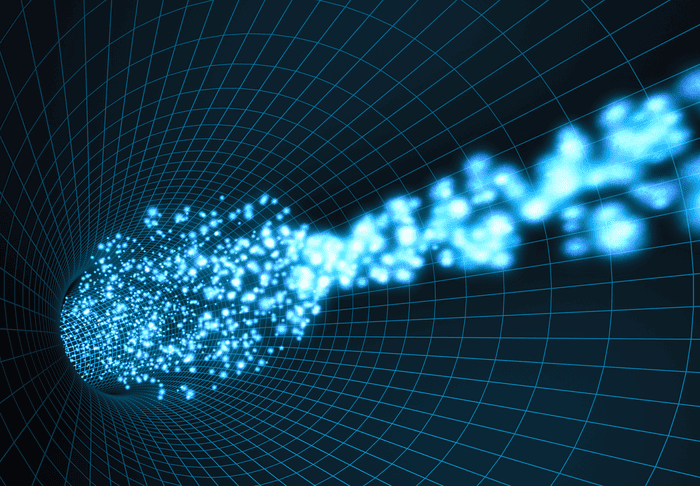
Researchers in the US have developed a machine learning algorithm that accurately reconstructs the shapes of particle accelerator beams from tiny amounts of training data. The new algorithm should make it easier to understand the results of accelerator experiments and could lead to breakthroughs in interpreting them, according to team leader Ryan Roussel of the SLAC National Accelerator Laboratory.
Many of the biggest discoveries in particle physics have come from observing what happens when beams of particles smash into their targets at close to the speed of light. As these beams become ever more energetic and complex, maintaining tight control over their dynamics becomes crucial for keeping the results reliable.
To maintain this level of control, physicists need to predict beam shapes and momenta as accurately as possible. But beams may contain billions of particles, and it would take vast amounts of computing power to calculate the positions and momenta of each particle individually. Instead, experimenters calculate simplified distributions that provide a rough idea of the beam’s overall shape. This makes the problem computationally tractable, but it also means that much useful information contained in the beam is thrown away.
“In order to develop accelerators that can control beams more precisely than current methods, we must be able to interpret experimental measurements without resorting to these approximations,” Roussel says.
AI assistance
For the team at SLAC, the predictive power of AI, plus advanced methods for tracking particle motions, offered a promising potential solution. “Our study introduced two new techniques to efficiently interpret detailed beam measurements,” Roussel explains. “These physics-informed machine learning models need significantly less data than conventional models to make accurate predictions.”
The first technique, Roussel continues, involves a machine learning algorithm that incorporates scientists’ present understanding of particle beam dynamics. This algorithm allowed the team to reconstruct detailed information about the distributions of particle positions and momenta along all three axes parallel and perpendicular to the beam’s direction of travel, based on just a few measurements. The second technique is a clever mathematical approach that enabled the team to integrate beam simulations into the models used to train the machine learning algorithm. This improved the accuracy of the algorithm’s predictions even further.
Roussel and colleagues tested these techniques using experimental data from the Argonne Wakefield Accelerator at the US Department of Energy’s Argonne National Laboratory in Illinois. Their objective was to reconstruct the position and momentum distributions of energetic electron beams after the beams pass through the linear accelerator. “We found that our reconstruction method was able to extract significantly more detailed information about the beam distribution from simple accelerator physics measurements than conventional methods,” Roussel says.
Highly accurate predictions
After training their model with just 10 samples of data, the researchers found that they could predict the electron beams’ dynamics in a further 10 samples extremely accurately, based on simple sets of measurements. With previous approaches, several thousand samples would have been needed to yield the same quality of results.

AI and particle physics: a powerful partnership
“Our work takes significant steps towards achieving the accelerator and beam physics communities’ goals of developing techniques to control particle beams down to the level of individual particles,” Roussel says.
The researchers, who report their work in Physical Review Letters, hope the flexibility and detail of the new approach will help future experimenters extract the maximum amount of useful information from experimental data. In time, such tight control could even bring physicists a step closer to answering fundamental questions about the nature of matter and the universe.
